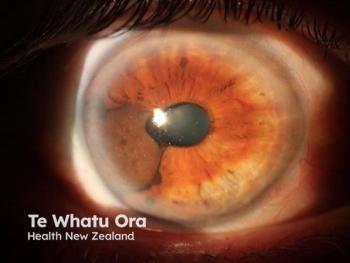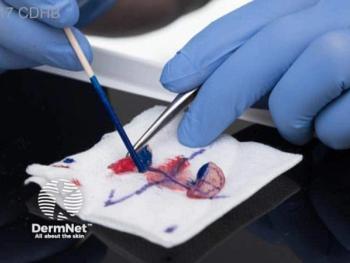
Patients not satisfied with photodynamic therapy for actinic keratosis
Literature review shows that laser-assisted photodynamic therapy more efficacious than photodynamic therapy alone for actinic keratosis.
Laser-assisted photodynamic therapy for actinic keratosis is associated with higher clearance rates than photodynamic therapy alone, shows a systematic literature review and meta-analysis.
“Our review and meta-analysis provides evidence-based data on a combination treatment of laser and
Dr. Berking is the corresponding author of the review published September 26 in the Journal of the American Academy of Dermatology.
The review, which was conducted between 2017 and 2018, includes seven randomized controlled trials with a total of 240 patients. Six of the seven studies evaluated methyl ester cream as the photosensitizer, and the remaining study assessed 5-aminolevulinic acid. In addition, four studies investigated an erbium:YAG laser and the other three studies a carbon dioxide laser.
The two primary outcomes were the lesion-specific complete clearance rate and local adverse events.
Six of the seven studies reported clearance rates, of which four provided enough data to perform meta-analysis. Overall, laser-assisted
Likewise, a sensitivity analysis of inter-individual trials revealed a similar effect.
The authors noted that a 33 percent higher chance of lesion clearance with laser-assisted photodynamic therapy is “remarkable,” as photodynamic therapy alone is considered highly effective treatment for actinic keratosis, reflected by clearance rates of 70 percent to 90 percent in several phase three trials.
“We expected that the combination treatment would be better than either therapy alone, but we were pleased that the limited number of studies which fulfilled the selection criteria was sufficient to calculate a risk ratio of 1.33 for clearance rates,” Dr. Berking said in an interview with Dermatology Times.
None of the included studies reported severe adverse events or on any patients who discontinued treatment, but then no study reported patient satisfaction either.
Five of the seven studies, however, measured severity of pain during or immediately after treatment, with two of those studies containing sufficient data for meta-analysis. The two studies with an aggregate 104 patients found no difference in pain intensity between the two interventions.
One of the five studies with 10 patients reported an average of four on the visual analogue scale for pain (scale 0 to 10) with the combination treatment and a score of three for photodynamic therapy monotherapy. But the study authors did not divulge the confidence interval or whether the difference was meaningful.
Another study of 15 patients found a median of 6.5 (range 2 to 10) for the VAS with combination therapy and a median of 5.4 (range 3 to 8) with photodynamic therapy alone.
“The review supports dermatologists to combine laser with photodynamic therapy in the treatment of multiple actinic keratosis actinic keratosis of different Olsen grades, especially in cases of field cancerization and in the presence of hyperkeratotic lesions, which would not be amenable to photodynamic therapy alone,” Dr. Berking said.
Dr. Berking said the laser treatment itself can have a direct cytotoxic effect on the lesions. It can also be used to remove hyperkeratotic parts of the lesions and/or to increase penetration of the photosensitizing agent into the skin.
“This recommendation includes the subgroup of immunocompromized organ transplant recipients, who are at markedly increased risk of incidence and progression of non-melanoma skin cancer,” she said.
Three limitations of the meta-analysis are the different treatment protocols, the various study designs (intra-individual versus inter-individual) and the different laser settings used by the trials.
Dr. Berking and her colleagues are currently analyzing the evidence for combining photodynamic therapy with other topical drugs in the treatment of actinic keratosis.
REFERENCE
Steeb T, Schlager JG, Kohl C, et al. “Laser-Assisted Photodynamic Therapy for Actinic Keratosis: A Systematic Review and Meta-Analysis,” Journal of the American Academy of Dermatology, 2018 September 26. pii: S0190-9622(18)32630-6. DOI:10.1016/j.jaad.2018.09.021. [Epub ahead of print]
Newsletter
Like what you’re reading? Subscribe to Dermatology Times for weekly updates on therapies, innovations, and real-world practice tips.

















